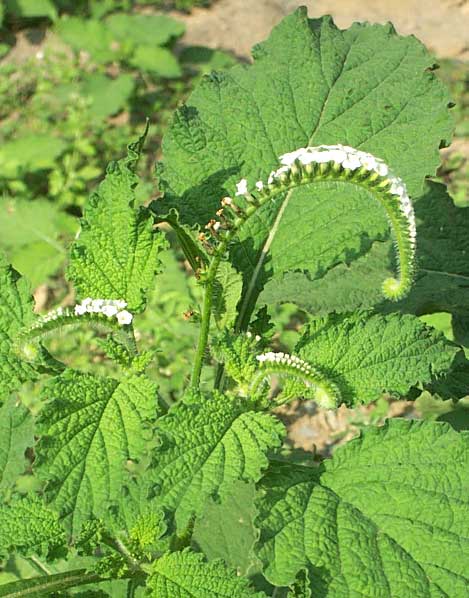Excerpts from Jim Conrad's
Naturalist Newsletter
from the June 2, 2007 Newsletter issued from Sierra Gorda Biosphere Reserve, QUERÉTARO, MÉXICO
PLANT CALLED SCORPION TAIL
One plant flowering here these days in rich, moist soil in full sunlight along the reservoir's shore is a tropical and subtropical species reminiscent of a well-known Northern garden plant. See if you can guess its affiliations by looking at the picture below:
 .
.
The most characteristic feature of that plant is how its inflorescence, or flower cluster, coils tightly at its loose end. Also notice how its lower flowers are more advanced in their development than those in the tightly coiled outer part, and that all flowers appear on just one side of the inflorescence axis. Such coiling inflorescences are said to be "scorpioid," referring to the scorpion's upward-curled tail.
The scorpioid inflorescence in my picture probably reminds many of you of the garden's usually-blue-flowered Common Heliotrope. The plant in my picture is indeed a heliotrope, HELIOTROPIUM ANGIOSPERMUM, often called Scorpion Tail. It's distributed from the US Deep South through the Americas to Brazil. Sometimes it's also called the Butterfly Heliotrope, and with good reason: You just should have seen them flitting about.
By the way, scorpioid inflorescences are restricted to a handful of plant families, so when you see flowers arranged like that it should help you figure out which family it belongs to. Usually heliotropes are placed in the Borage Family (Bluebells and Forget-me-nots), but some are now placing it in its own Heliotrope Family. Another family often with scorpioid inflorescences is the Waterleaf Family (Phacelias).